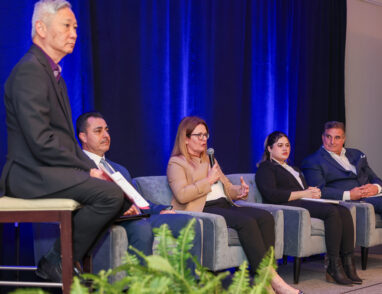Guest Blog: The SCAN Foundation Discusses Tools to Make the Business Case for Person-Centered Care
July 20, 2016 · Amy Maciejowski
This blog originally appeared on The SCAN Foundation website and is reprinted with permission. It was written by Bruce Chernof, MD, President and CEO of The SCAN Foundation. The SCAN Foundations is dedicated to creating a society where older adults can access health and supportive services of their choosing to meet their needs. The Perspectives Series provides opinions and observations about transforming the way in which we age. Follow Dr. Bruce on Twitter @DrBruce_TSF.
We all want a high quality, technically correct health care experience. From a population perspective, unnecessary variations in care must be diminished. However, what drives so much of the health care utilization for vulnerable older adults is not a technical failure, nor unnecessary variations. Instead it is the health system’s failure to fully understand and address the uniqueness in older adults’ needs – whether these are functional, behavioral, and/or environmental – coupled with the person’s medical profile.
It turns out that helping older people thrive in homes and communities of their choosing is a major key to controlling health care expenditures for “high cost, high needs” individuals. The data are not new. The costliest 5 percent of Medicare beneficiaries account for almost 40 percent of annual spending, and older adults with functional needs and chronic health conditions cost roughly twice as much as those with chronic conditions alone. How a person lives every day in light of their health status – particularly their ability or inability to achieve security and stability in the community – matters. As Medicare moves away from fee-for-service and utilization-based managed care to value-based purchasing, addressing health in light of daily living needs is not simply a “nice to have” programmatic add-on, but a business necessity.
So what can advance this paradigm shift?
It is delivery systems that champion person-centered care.
In December, the American Geriatrics Society (AGS) released a groundbreaking national consensus definition for person-centered care. According to its expert panel, person-centered care means that individuals’ values and preferences are elicited and, once expressed, guide all aspects of their health care, supporting their realistic health and life goals. This approach can also include input from family members and other caregivers if the person wishes. AGS clearly articulated eight characteristics necessary to stand up a successful person-centered care program, ranging from creating a goal-oriented plan of care to performance measurement grounded in feedback from the person and their family.
To ramp up greater adoption of person-centered care models, we are releasing two resources to help health care delivery systems develop sustainable models and make an effective argument to both clinical and administrative leaders. The first resource is a Business Case, outlining the value proposition and potential economic return of person-centered care models. It provides a clear-eyed view of the economic potential of person-centered care programs. It also highlights how person-centered care programs’ value are not purely cost avoidance – they potentially include higher premium payments, improved reimbursement in pay for performance programs, increased staff satisfaction/decreased staff turnover, and most importantly improved quality outcomes for older adults with high needs.
The second companion tool is an interactive Return On Investment (ROI) Calculator to help health care organizations shape sustainable, person-centered care programs by understanding costs, analyzing trade-offs in program design, and tracking variances over time. The ROI Calculator allows organizations to use their own data and create results that are completely customized for their models. Building an effective business case for any new program requires a trustworthy ROI to garner buy-in from executive and administrative leadership responsible for the organization’s fiscal solvency along with ensuring quality.
The current medical system was purpose-built for the convenience of providers, regulators, and payers. However, all of us trained in one of the health care professions fundamentally know that older people are only patients when lying in hospital beds or sitting in “waiting rooms.” The rest of the time these patients with significant health and daily challenges are still people with goals, dreams, and the hope to live well in the place they call home. Standing up person-centered models that embrace the whole person beyond one’s medical problem list is the secret sauce in meeting the “Triple Aim.” These new tools show how it is possible and sustainable.









